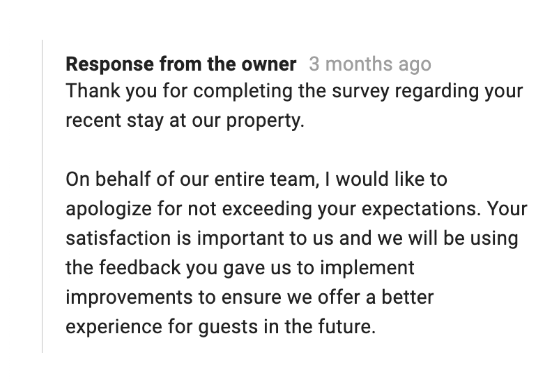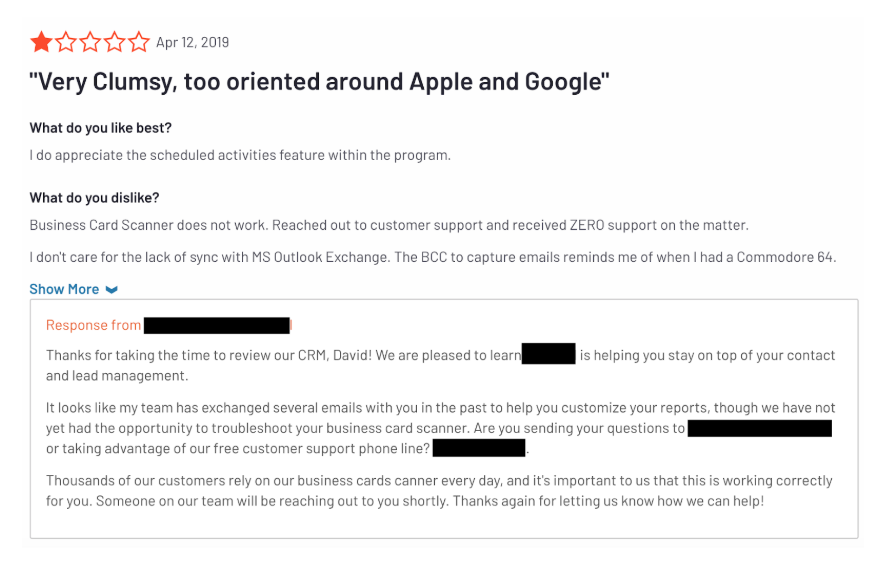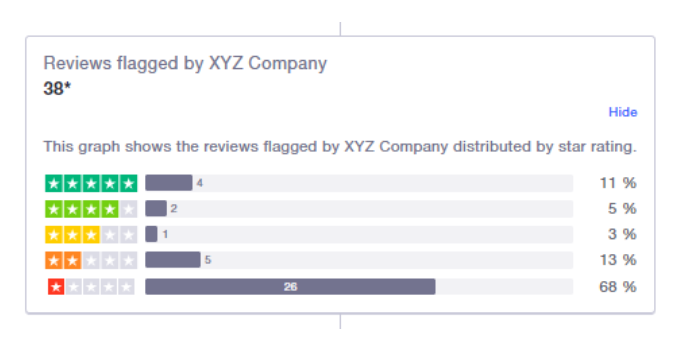Let’s face it, no modern business is immune to negative feedback.
Social media and review sites give customers free rein to voice their opinion about a business or product. And, unfortunately, it’s often the most disgruntled customers who are the most vocal.
Nearly 95% of online shoppers read online reviews before making a purchase.
92% of B2B buyers are more likely to make a purchase after reading a trusted review.
68% of Americans say that positive reviews make them more likely to use a business.

But, here’s the good news– a strategic response to a negative online review can actually improve your customer relationships and help you win more business in the future. Today we teach you how!
9 Steps for Handling Negative Business Reviews
You never know when your business will receive a bad review that requires your attention. So, it’s important to have the appropriate protocol in place to deal with all bad reviews smoothly and efficiently. Here’s what we recommend:
Table of Contents
1. Monitor your online reputation.
Generally, most customers who post negative reviews are plagued by a very specific, often pressing, issue. The longer you make them wait, the more agitated they may become. But, with so many online forums and public outlets available to your customers, it’s easy to let a bad review slip through the cracks and remain unresolved.
For this reason, we recommend you develop a system to monitor your business reviews on a regular basis. Although there are several ways to do this, here are some quick and easy tips you can implement relatively quickly:
Google Alerts: An easy way to monitor your online reputation is to set up automated Google Alerts to inform you whenever your brand, product, or company is mentioned online.
Bookmark popular review websites: Establish a workflow that provides easy access to sites customers most commonly use to post reviews. Examples include Yelp, Better Business Bureau, G2 Crowd, and Glassdoor.
Track branded keywords on Twitter: Social media has changed the definition of a customer review, as a simple tweet can serve as a negative review of your business. Track specific keywords related to your company, products and brand so you’ll be alerted when a customer tweets negative feedback.
When it comes to running a business, the phrase, “ignorance is bliss,” doesn’t apply. In fact, not knowing the things customers say about your business can impact your ability to attract new customers, earn revenue, and so much more.
2. Gather information about each bad review.
Take a step back and analyze each negative review before you react. No two reviews are the same, so each interaction, opinion, and issue requires its own approach. Start by asking yourself the following questions:
Why did the customer leave a negative review?
What is the tone of the review? Is the customer disappointed, confused, angry, frustrated?
What information can you access about the customer and their history with your company?
Is the customer’s issue an isolated incident, or is it representative of a larger problem with your business or product?
Who should respond to this review, and what key stakeholders must be consulted to resolve the customer’s problem?
Keep in mind, some reviews will be too brief or ambiguous for you to answer all of the above questions. But, gathering all available information will help your business articulate a well-informed, detailed, and appropriate response.

3. Delegate ownership of the review.
Based on the information provided, assign responsibility to the department, employee, or account owner best suited to handle the issue. Maybe a certain manager has extensive experience handling issues similar to the reviewer’s complaint. Or, perhaps a specific sales rep has a good relationship with the customer who wrote the review.
If you have very little information about the customer, you might need to delegate ownership to an experienced customer service rep who can adapt on the fly and handle many different scenarios.
4. Post a public response.
Once you’ve assessed the negative review and gathered all available information, it’s time to post a public reply. A public response show your commitment to transparency and customer service—to the unhappy customer and to any potential business prospects who see the interaction.
However, there are two caveats to keep in mind. One, some reviews won’t require a specific response—such as reviews that are clearly disingenuous, vindictive, or fake. Two, your level of control depends on the specific review platform.
Some sites don’t allow companies to respond directly, in which case you should try to identify another point of contact. Other sites give companies complete control, and while we don’t advocate hiding negative feedback, it’s sometimes appropriate in the case of fake or offensive reviews.
But, in most cases your company can, and should, post a public response. Just as the right message can help you divert the situation and win new business, the wrong message can further aggravate an unhappy customer. To avoid the second scenario, be sure to follow the guidelines below when responding to a negative review:

Respond in a timely manner:
Assess the review quickly so you can assign ownership and post a prompt response. Otherwise, people may see the negative review and assume you’ve chosen to ignore it. If you are still searching for information about the customer or have yet to speak the necessary department, you can still respond in a timely manner. Simply let the customer know you’re looking into the issue and provide them with the appropriate contact information if you require more details about their complaint.
Take responsibility:
Apologize to the customer and provide an outline of the specific steps your company has taken and will take in the future to address this issue. Again, not every customer complaint will be your fault nor will every complaint have a resolution, but simply acknowledging a customer’s negative experience goes a long way.
Don’t pick a fight:
Although a negative review may be confrontational, rude, and even disrespectful, your response shouldn’t be. Avoid exacerbating the public confrontation or escalating the situation by maintaining a professional and helpful tone.

Let’s look at two hypothetical responses to a bad review. In this scenario, a customer, Jack, leaves a one-star review of your product. His review states that your product app closes randomly and doesn’t allow him to save his progress.
Response 1: “Hi Jack, we apologize for your negative experience. We haven’t heard this complaint from other customers, so you may have made an error when setting up your account or there may be an issue with your device. Please contact us if you’d like more information!”
Response 2: “Hi Jack, we apologize for this issue with our product. We’re looking into the problem as we speak so we can provide the seamless experience you’ve come to expect from us! Please reach out to jackie@customersuccess.com so we can gather some more information from you , thank you for bearing with us!”
The first response may be polite, but it puts the blame on the customer. The second response takes responsibility for the problem, provides the customer with a direct point of contact, and indicates that they’re already working to solve the issue.
5. Continue the conversation in private.
Take the conversation offline once you’ve left a thoughtful public response. Resolving the customer’s issue may require personal information, login details, or a lengthy back-and-forth, all of which is best kept out of a public forum.
Of course, your business may not have access to the person’s contact information based on their review alone. But, if you provided a direct point of contact, you should expect to receive a private message from the customer. If they don’t reach out, they most likely complained for the sake of complaining and their issue isn’t as pressing as it may have originally seemed.
Begin your private follow-up with another brief apology. Then, try to fill in any missing information required to solve the problem. Remain polite and sympathetic as you ask the customer for more details about the issue. Finally, explain in specific detail what your business will do to make up for the customer’s unfavorable experience.
If it’s a technical problem, let the customer know it’s been identified and provide them with an estimate of how long the fix should take. Or, if it’s an administrative error, let them know you caught the issue and what steps you’ve taken to make sure it won’t happen again. If it’s an issue with pricing, features, or another non-negotiable factor that doesn’t have a quick fix, do your best to communicate that you appreciate their feedback and let them know it has been passed along to the appropriate departments.
6. Take specific action to resolve negative reviews.
On its own, a heartfelt apology may not be enough to change an unhappy customer’s mind. However, if you actually resolve a customer’s complaint, they’re much more likely to change their negative opinion of your business. In fact, up to 70% of customers who complain about your company will do business with you again if you resolve their problem (source).
Once you understand the issue at hand, consult with the department best equipped to handle it. For example, forward complaints about a technical glitch to your product marketing or engineering team. As the involved parties address the problem, stay in contact with the customer and let them know when the issue has been resolved.

In order to resolve complaints efficiently, we recommend you create a formalized process for handling and reacting to customer reviews. Establish a workflow to catalog reviews and analyze them for common issues or complaints. And, designate a main point of contact within each department who will handle specific types of problems.
7. Offer a token of gratitude.
Consider offering customers an additional show of appreciation once you’ve resolved their issue. For example, if your business made a clear error that caused the customer to lose valuable time or productivity, compensate them with a discount or free gift.
With that being said, we caution against sending gifts to every customer who voices a negative opinion about your company. You don’t want to reward negative feedback, nor do you want your giveaways to seem like an empty gesture. Your priority is to fix the customer’s problem—and when appropriate, take an extra step to make things right.
8. Ask customers to update negative reviews.
Your first instinct may be to hide or remove negative reviews once they’ve been resolved. But here’s the thing—prospects want to see negative reviews. Don’t believe us? Check out these statistics (source):
72% of B2B buyers say negative reviews give depth and insight into a product.
40% of B2B buyers say negative reviews help build credibility for a product.
95% of consumers are suspicious of fake reviews if there are no bad scores.
Rather than ask for a review to be taken down, ask customers to update their review once you’ve resolved their issue. When prospects see an updated review, they see clear evidence of your company’s commitment to fixing its mistakes and helping unsatisfied customers.
9. Report on negative reviews to make strategic improvements.
Negative reviews can be a blessing in disguise, as they often expose flaws in your processes that you would otherwise fail to see. But, the only way to make improvements is to document your negative reviews and include them in your reporting process.

Here’s an example—let’s say you track your negative reviews over time and look for commonalities. Most of the reviews relate to isolated incidents, but you discover one common trend: Several reviews point to an issue with your website navigation. This trend convinces your executive team to sign off on a chatbot service that helps website visitors find their desired location.
Final Thoughts on How to Handle Negative Business Reviews
There’s no way around it, you won’t be able to satisfy every customer who has an issue with your company. But if you handle each bad review with care and efficiency, you’ll win customer trust and loyalty. We hoped today’s blog post helped you view negative reviews in a more positive light—not as a cause for concern, but as an opportunity for growth and development.
Contact our sales team today to learn how ZoomInfo has the business information you need to scale and grow your business.


